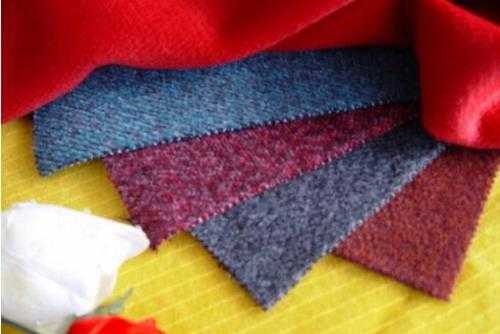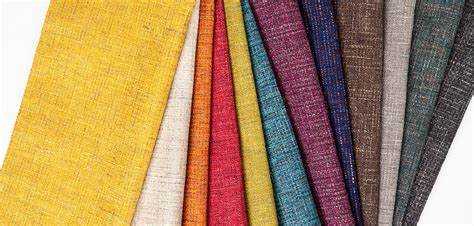Site: Home > News and events 


Authority|What are the 3 different types of textiles?
Textiles are products made through textile processing, mainly including yarns, woven fabrics, knitted fabrics, woven fabrics, etc. What are the types of textiles and what types are there?
Textile type:
1. According to the organizational structure, raw materials, processing technology, texture, appearance and main purpose of silk fabrics, it is divided into fourteen categories.
1. Yarn: The whole or part of the yarn is a silk fabric with evenly distributed perforations ("eyelets") formed by twisting warp yarns, also known as plain yarn.
2. Luo: All or part of the fabric is made of Luo weave silk fabric which is twisted by the warp yarns and presents pepper holes. There are straight Luo, Hengluo, Hualuo, and Suluo.
3. Satin: a silk fabric with a diagonal weave pattern on the surface of the fabric with a twill weave or a twill change weave, and the texture is light and thin. The surface of the fabric in the early days was a mountain-shaped twill pattern, which was called "Lingy" because it "looks like ice ling."
4. Silk: a natural silk fabric with a fine, smooth and crisp texture with plain weave.
5. Spinning: using plain weave, warp and weft without twist or weak twist, light and soft silk fabric.
6. Brocade: It is a colorful yarn-dyed jacquard silk fabric woven with multi-color silk threads using heavy organization. Brocade is a prestigious jacquard silk. There is a saying in ancient times that "weaving and plucking are literary, and the price is as gold as gold". There are Shu brocade, Song brocade and Yun brocade.
7. Satin: Satin weave or satin weave, smooth, bright and dense silk fabric.
8. Tint: a silk fabric with a thick texture and clear weave, using plain weave, filament as warp and cotton or other yarn as weft. There are plain thread satin and flower thread satin.
9. Ge: It is a silk fabric with plain weave, twill weave and its variation. The warp and weft are sparse, the warp and the weft are thick, the surface of the fabric shows horizontal weave, and the texture is thick.
10. It: adopts various structures, uses thicker warp and weft threads, and has rich texture and hairy silk fabric.
11. Pile: The whole or part of the piled structure is used, and the surface is a silk fabric with piles or pile loops.
12. Silk: a silk fabric with a plain weave or a change weave, and the warp and weft are tightly interlaced. Silk is the general term for silk fabrics. Its characteristics are: the silk surface is firm and dense, and the hand feels smooth. Silk fabrics without other obvious characteristics can be called silk.
13. Silk: a silk fabric with plain weave or false yarn structure, light texture and perforated.
14. Crepe: a silk fabric that uses plain weave or other organizations, and uses warp and weft to strengthen twists. The fabric shows a wrinkle effect. Its characteristics are: the silk mask has two-way wrinkles forward and backward, soft luster, elastic hand feel, and good anti-crepe effect.

2. According to the use of textiles, it can be divided into three categories: clothing textiles, decorative textiles, and industrial textiles.
1. Clothing textiles include various textile fabrics and sewing threads, elastic bands, collar linings, and protruding points, which can also be said to be a kind of arts and crafts.
2. Decorative textiles are divided into indoor products, bedding and outdoor products, including furniture and restaurant bathroom products, such as: carpets, sofa covers, chairs, tapestries, stickers, photo masks, textiles, curtains, towels, tea towels, Tablecloths, handkerchiefs, etc., bedding including bedspreads, sheets, quilts, duvet covers, blankets, towels, pillow cores, quilt cores, pillowcases, etc. Outdoor products include artificial turf and so on.
3. Industrial textiles have a wide range of applications and many varieties, such as canopy cloths, gun coats, filter cloths, screens, and roadbed cloths.
3. According to different production methods, it can be divided into six categories: thread, belt, rope, woven fabric, and textile fabric:
1. Wire category:
The textile fiber is processed into yarn by spinning, and two or more yarns are twisted to form a thread.
2. Belt type:
Skein and tubular fabrics are called belts.
3. Rope:
Multiple strands are twisted to form a big rope.
4. Woven fabric:
Fabrics woven with warp and weft are called woven fabrics.
5. Knitted fabric:
The fabrics and directly formed clothing items are knitted fabrics.
6. Non-woven fabric:
Non-woven fabrics are fabrics made of thin sheets without traditional weaving technology, but processed by fiber auxiliary nets.

The correct stacking method of textiles is to choose good ventilation and fire prevention. It is best to place all cotton fabrics in a well-ventilated place, such as the place closest to doors and windows, in a row with 6 to 7 rolls, and the second layer is laid flat vertically. The quantity must be Same as the bottom, the third layer is still horizontally laid out, with the same number, and so on.
There are 4 types of textile testing:
1. Combustion method
2. Microscope observation method
3. Hand-sensing and visual inspection method
4. Chemical reagent test method
It is recommended to go to an authoritative textile testing agency for testing and provide standard data. qinsun has in-depth cooperation with major testing institutions around the world to provide high-quality textile testing equipment , welcome to order!
2021-08-26 10:30
- Related News
Automatic Cross-Hatch Tester | PV 3952, Ford BN 108-03,GM N 14688 Compliant
Multi-Finger Scratch/Mar Tester | Automotive Plastics & Interior Materials T
Dental Material Color Stability Tester | ISO 4049 / YY 0270 / ASTM G155 Complian
Masks Bacterial Filtration Efficiency (BFE) Tester | YY 0469 / ASTM F2100 / BS E
Smoke Density Tester | ASTM E662 / ISO 5659-2 Compliant
Dry Microbial Penetration Resistance Tester | ISO 22612 / YY/T 0506.5
Dry Fallen Wadding Tester — YY/T 0506.6 | ISO 9073-10 | EN 13795-2
Fogging Tester | Automotive Interior Volatile Fogging Test System
